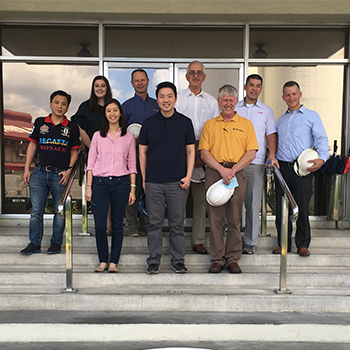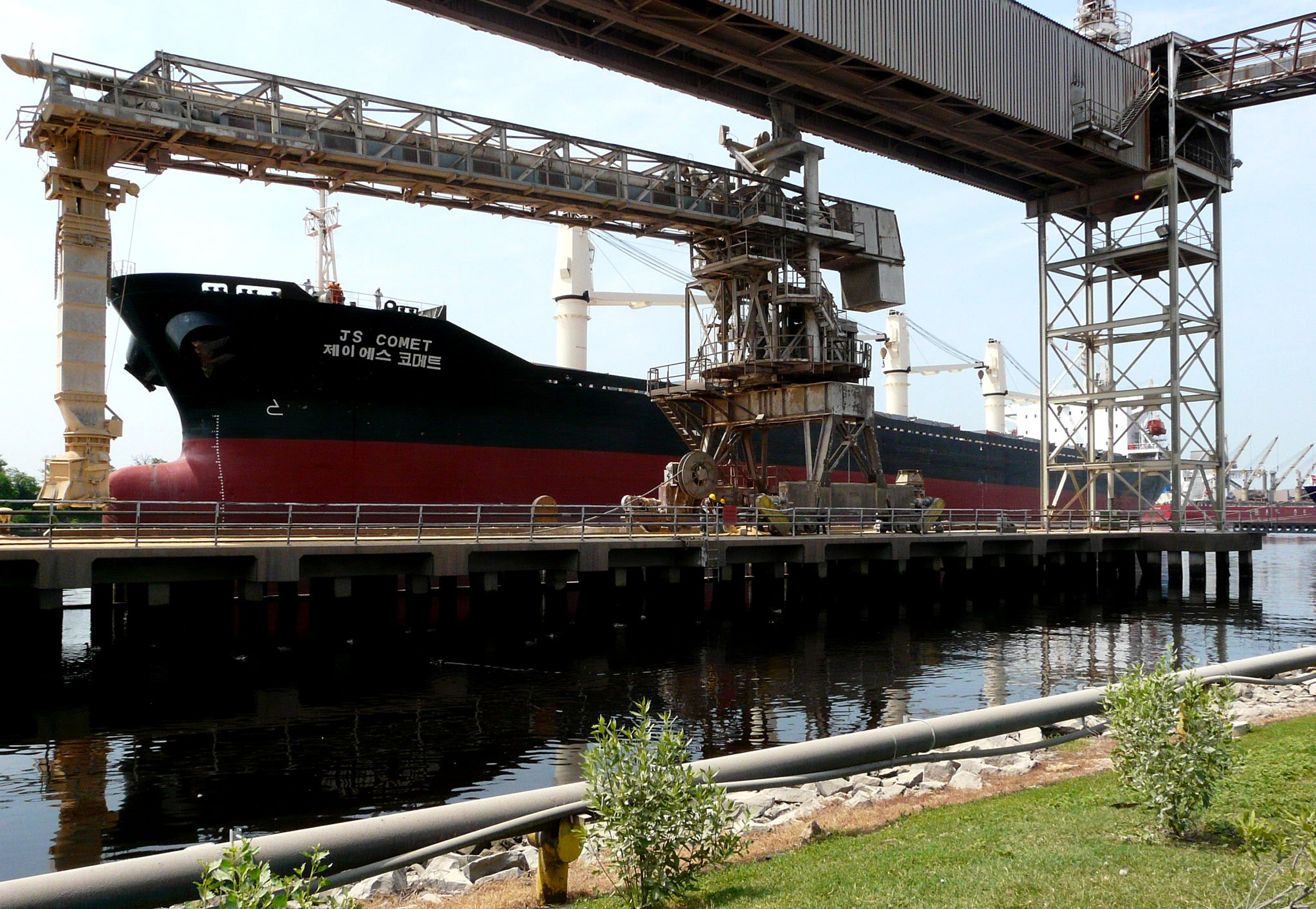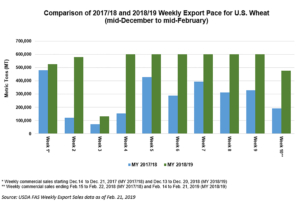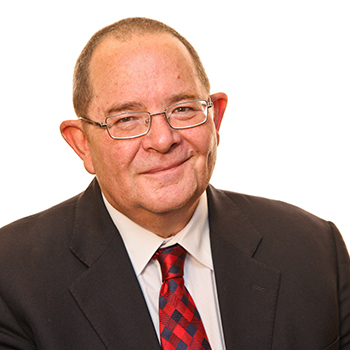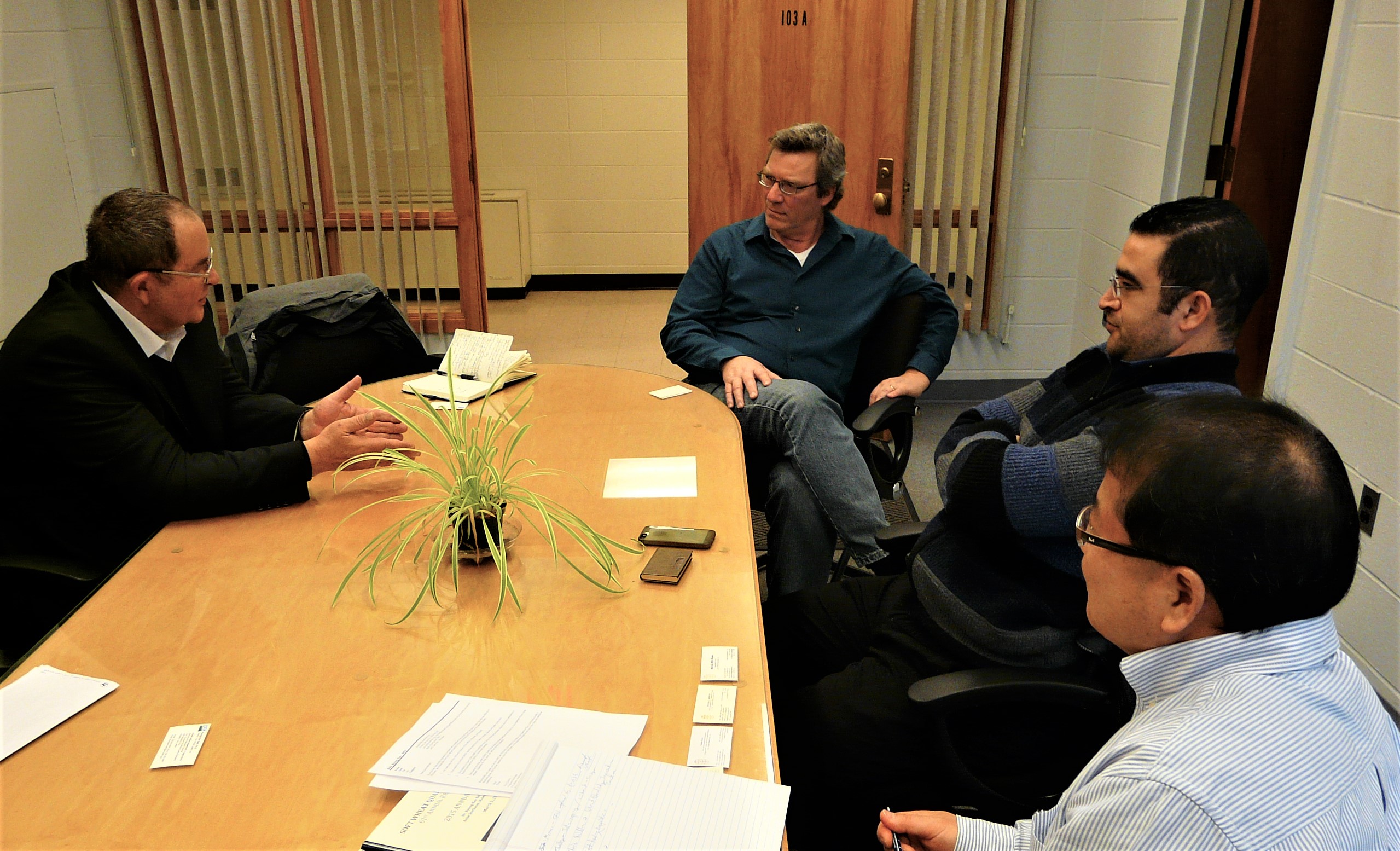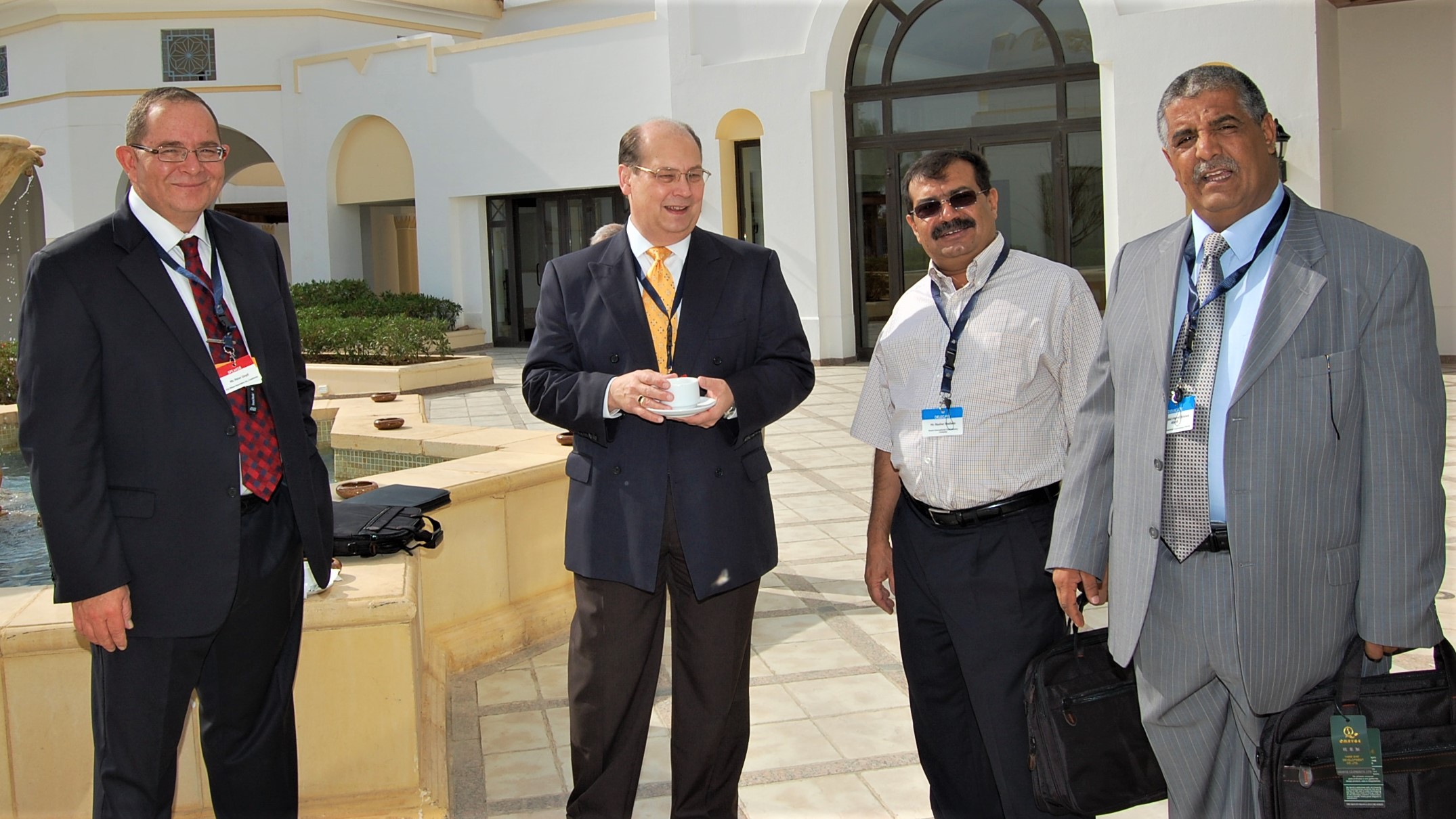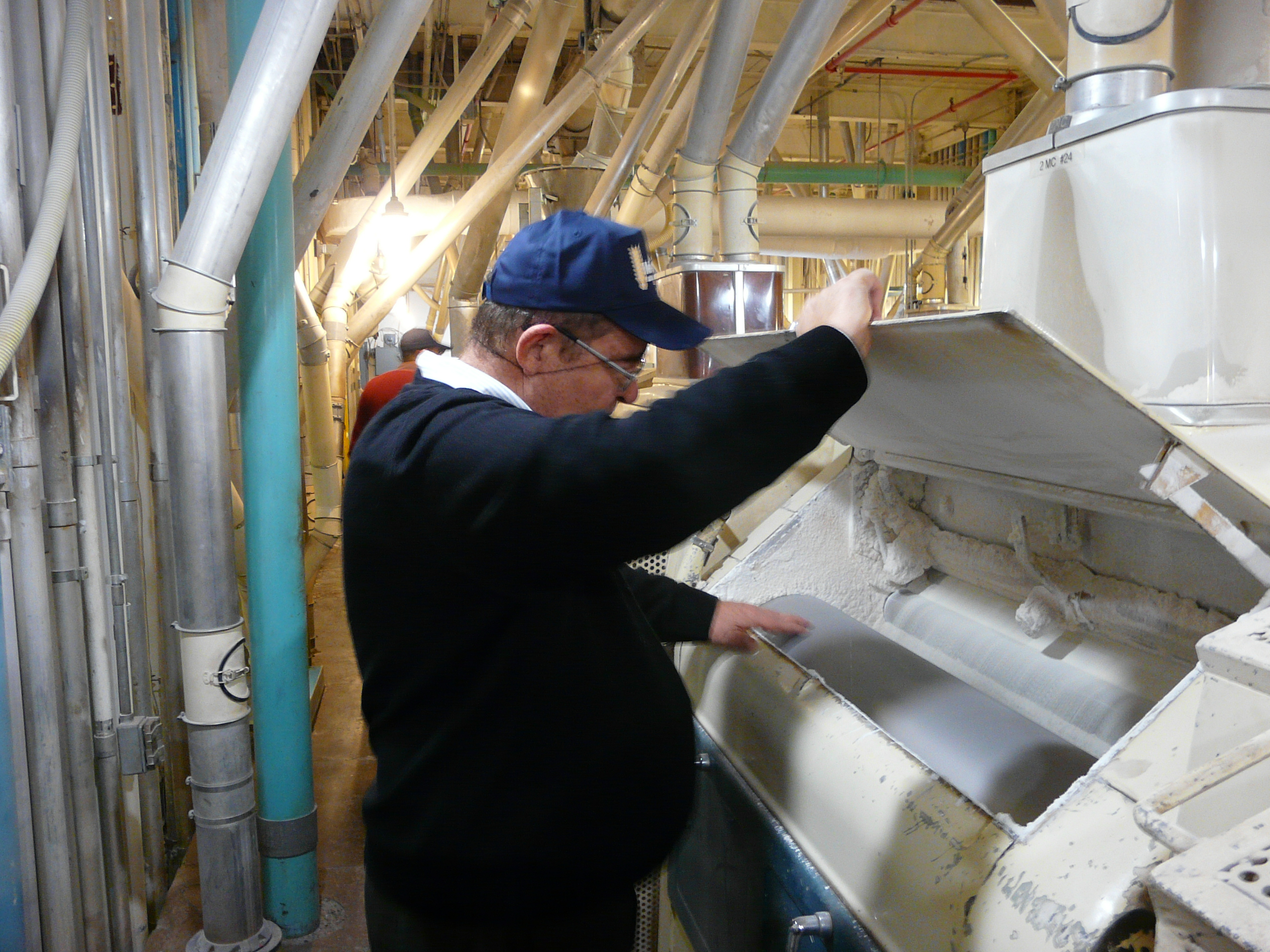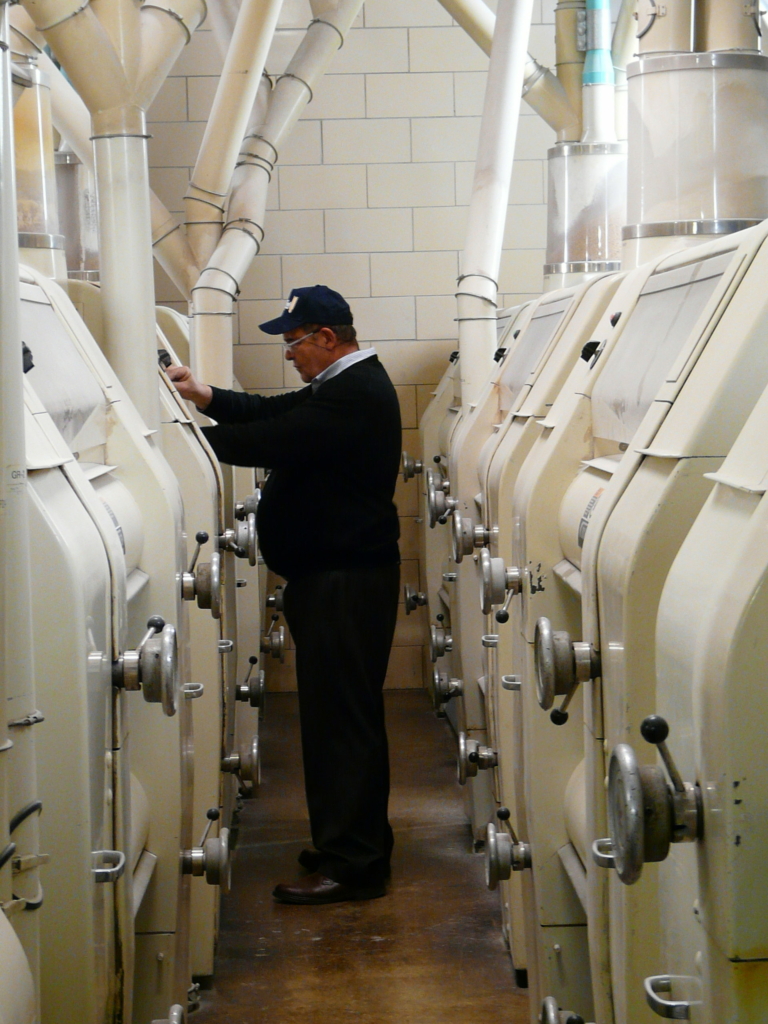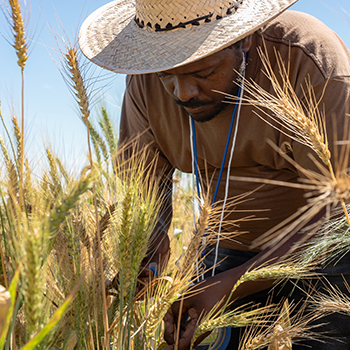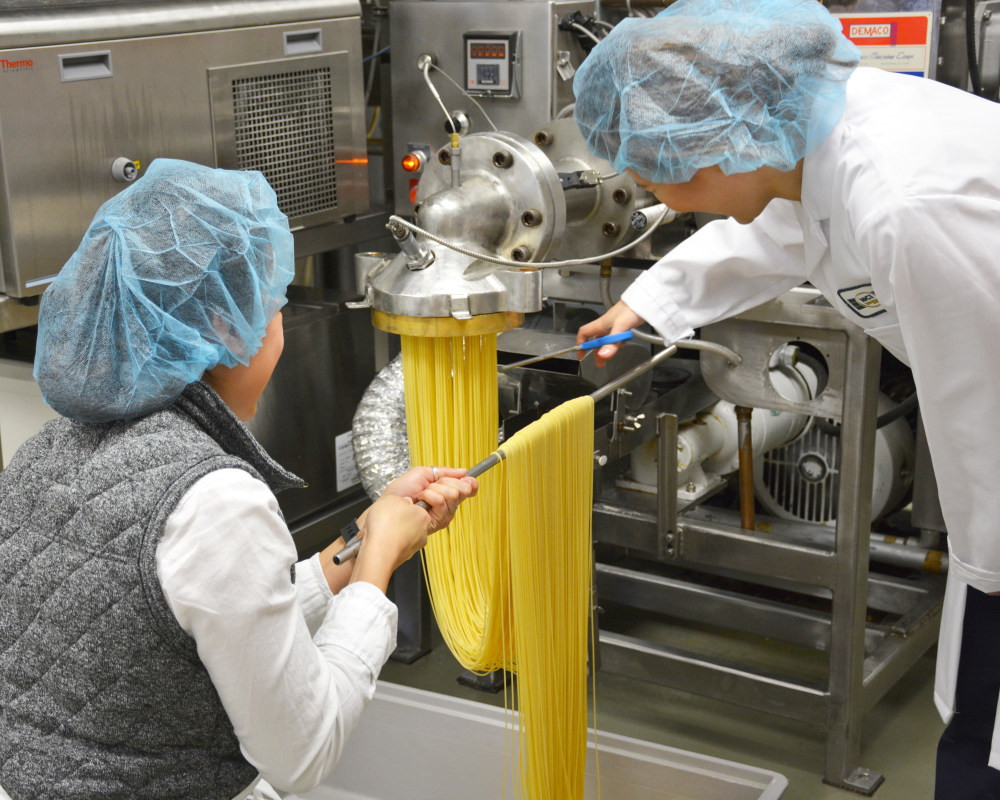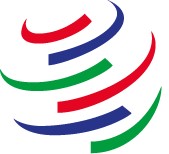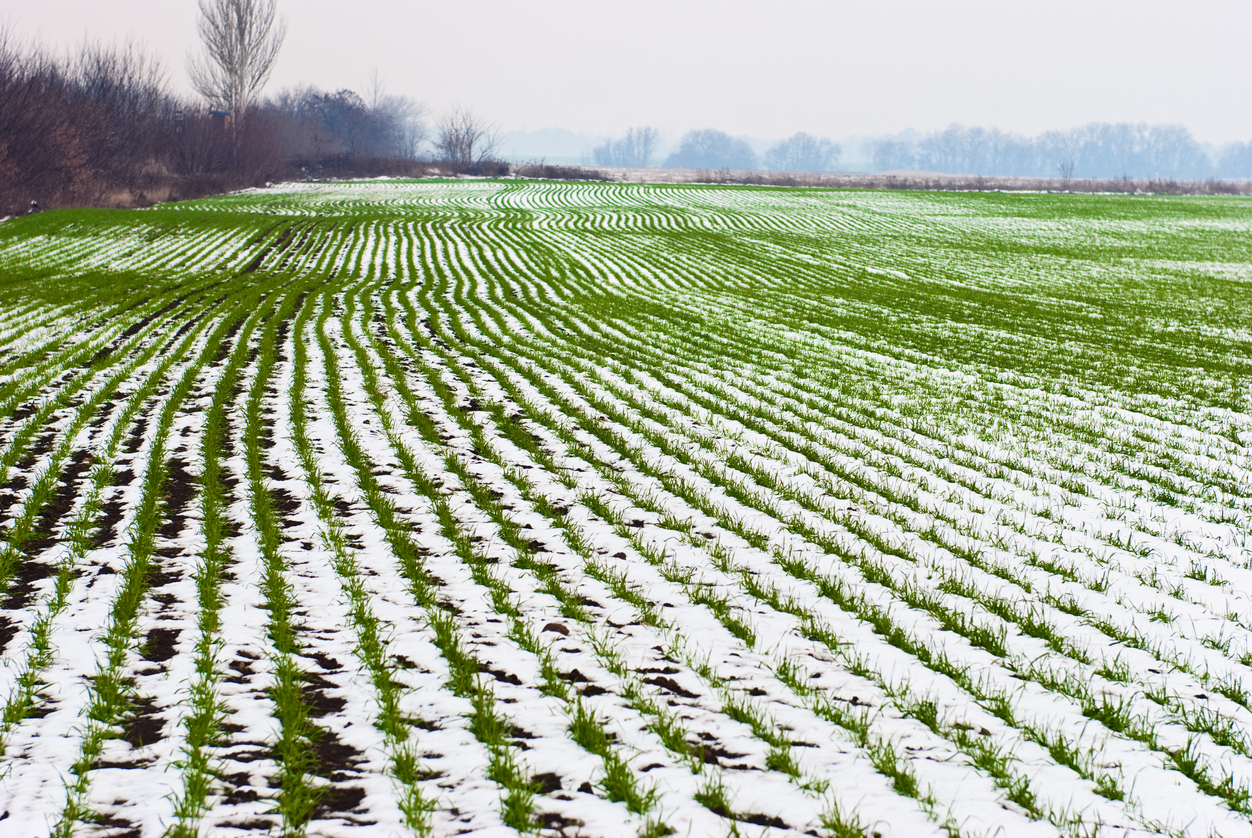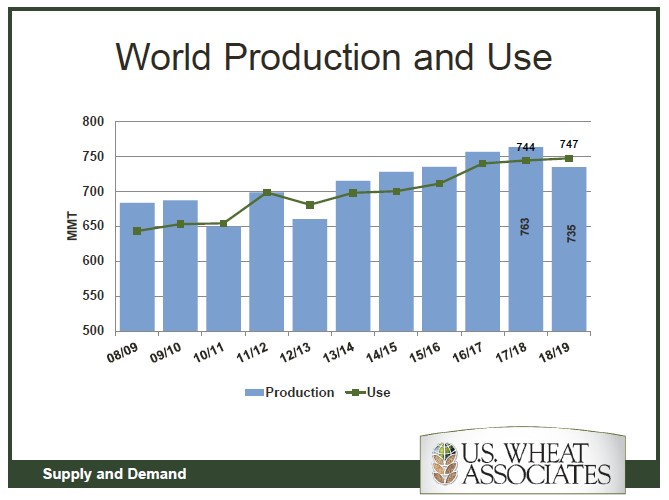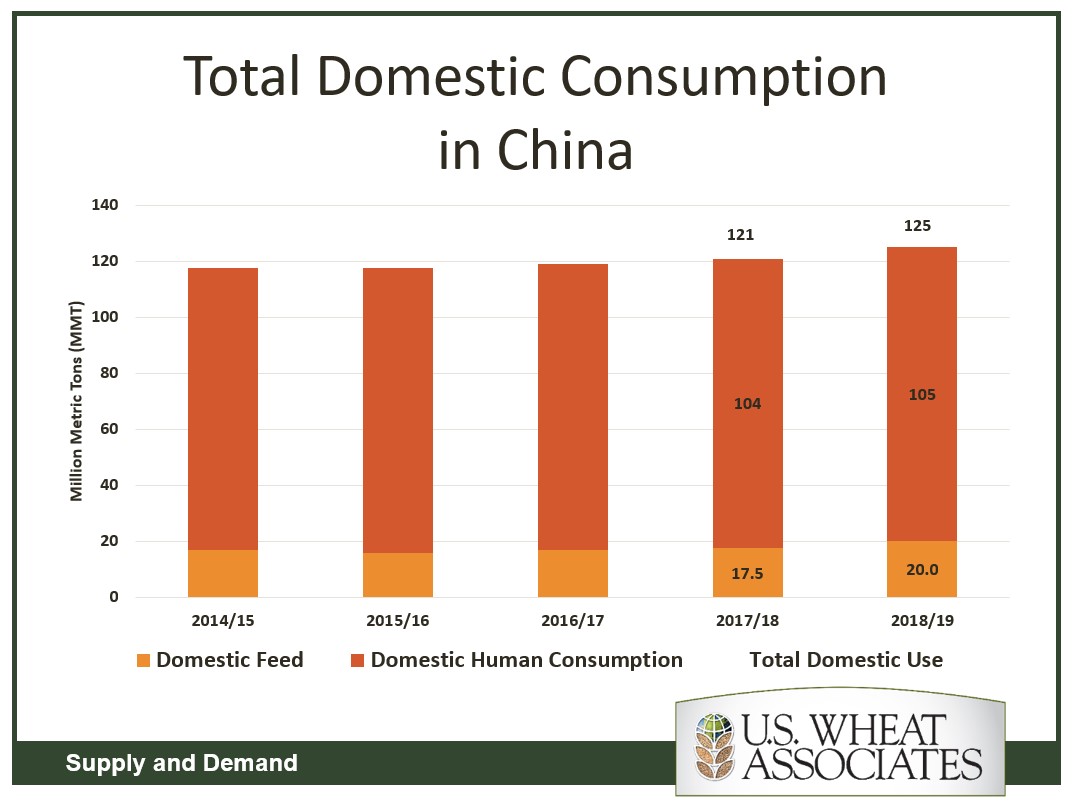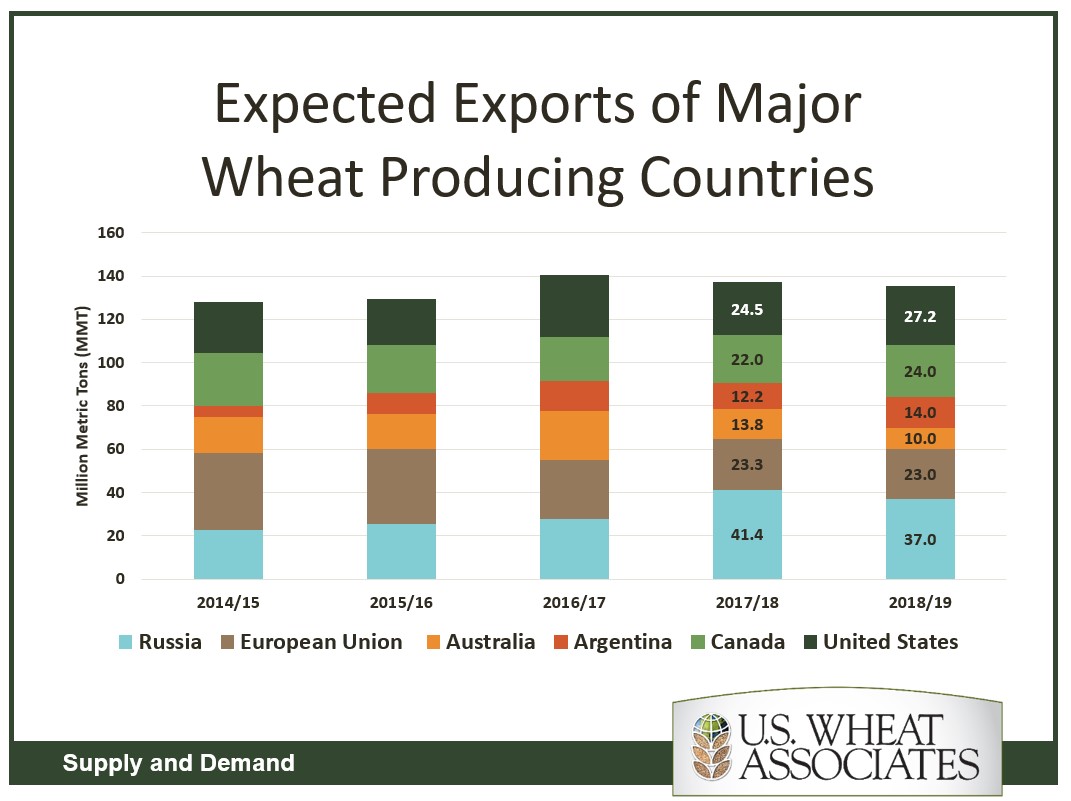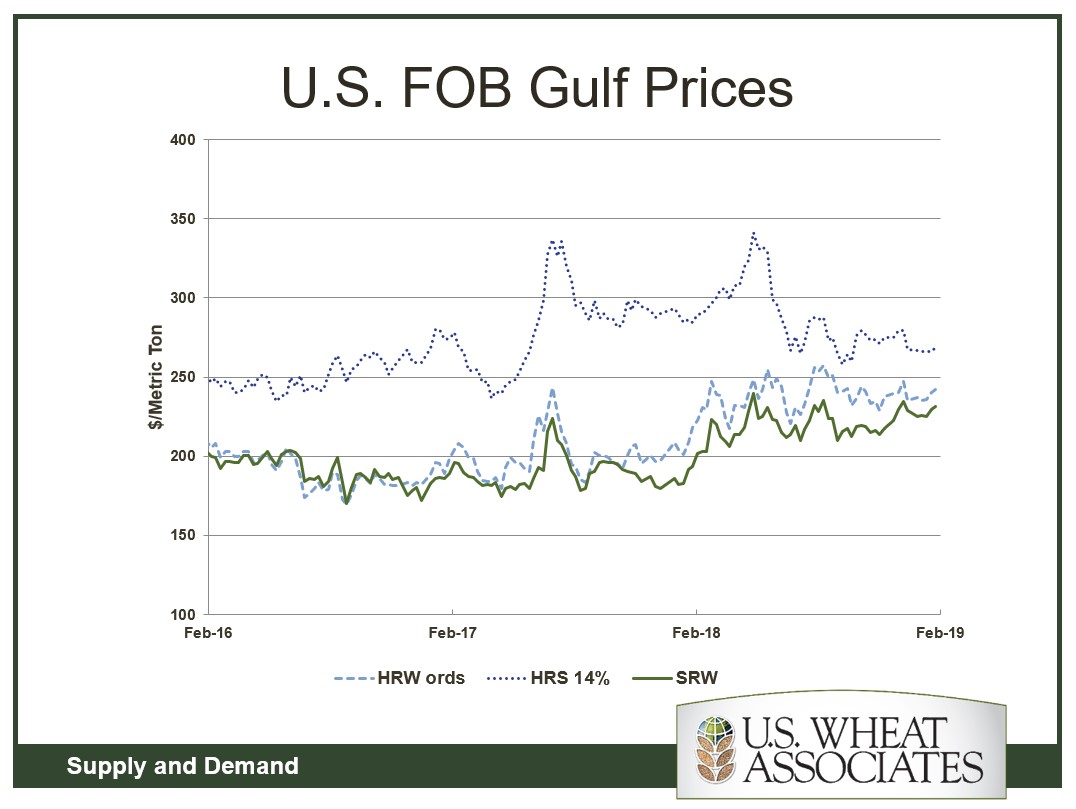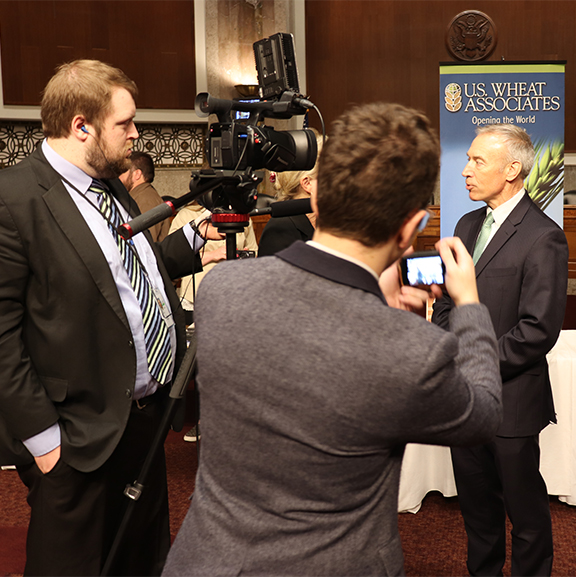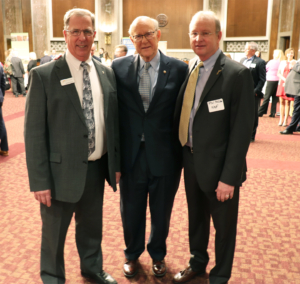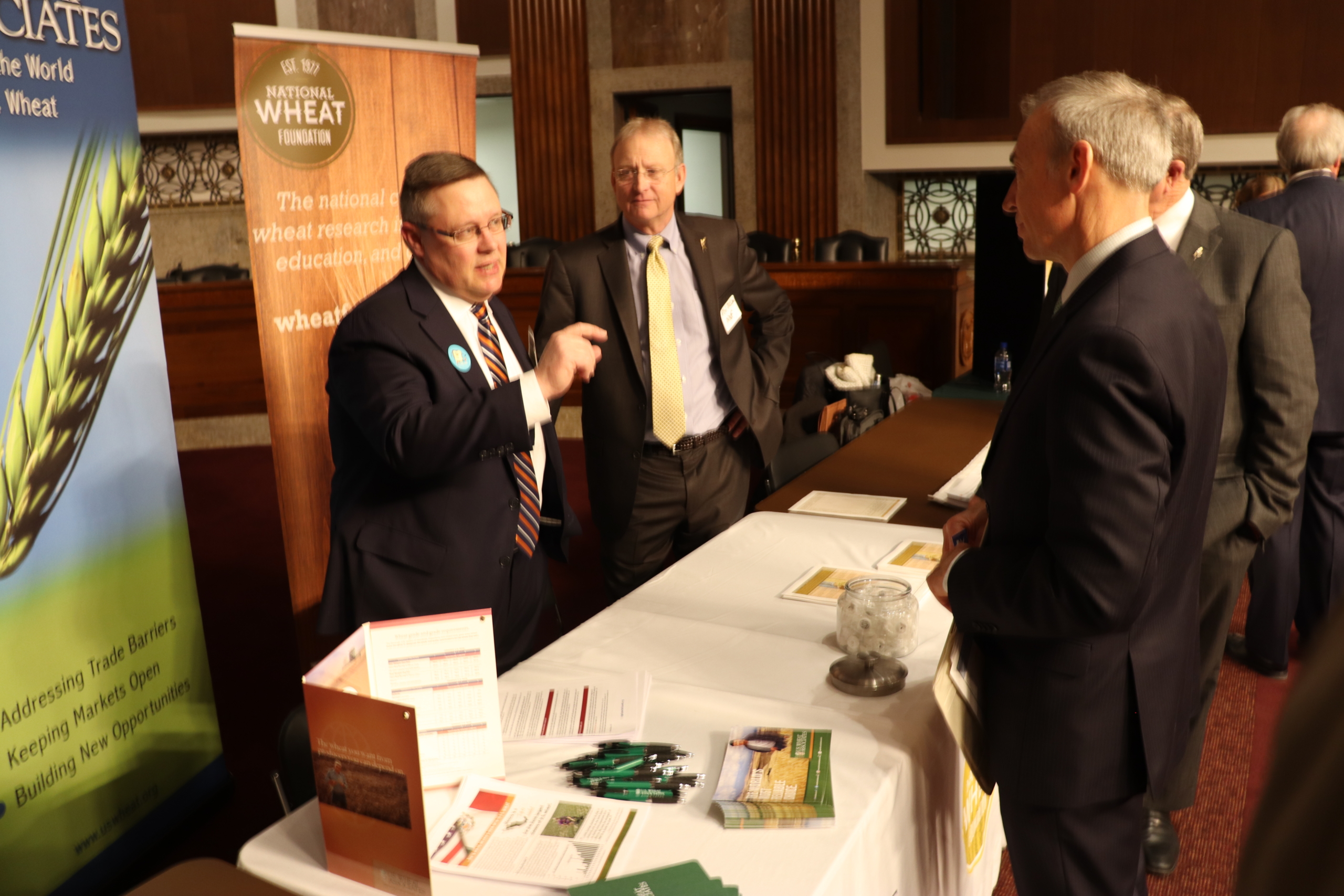By Catherine Miller, USW Programs and Planning Coordinator
Every year, U.S. Wheat Associates (USW) invites farmers (selected by state wheat commissions) to participate in a “Board Team” trip overseas to follow their wheat and learn from customers about the quality characteristics needed in those markets. In February the first USW Board Team of 2019 traveled to Southeast Asia—one of the largest and fastest growing wheat import regions. Stops in the Republic of the Philippines, Singapore and Indonesia gave the team the opportunity to visit important markets and learn more about how wheat-based products are re-shaping consumer demand.
The 2019 USW Southeast Asia Board Team included Joe Anderson of Lewiston, Idaho, representing the Idaho Wheat Commission; Wally Powell of Condon, Ore., representing the Oregon Wheat Commission; Philip Volk, of York, N.D., representing the North Dakota Wheat Commission; and team leader Catherine Miller, USW Program and Planning Coordinator.
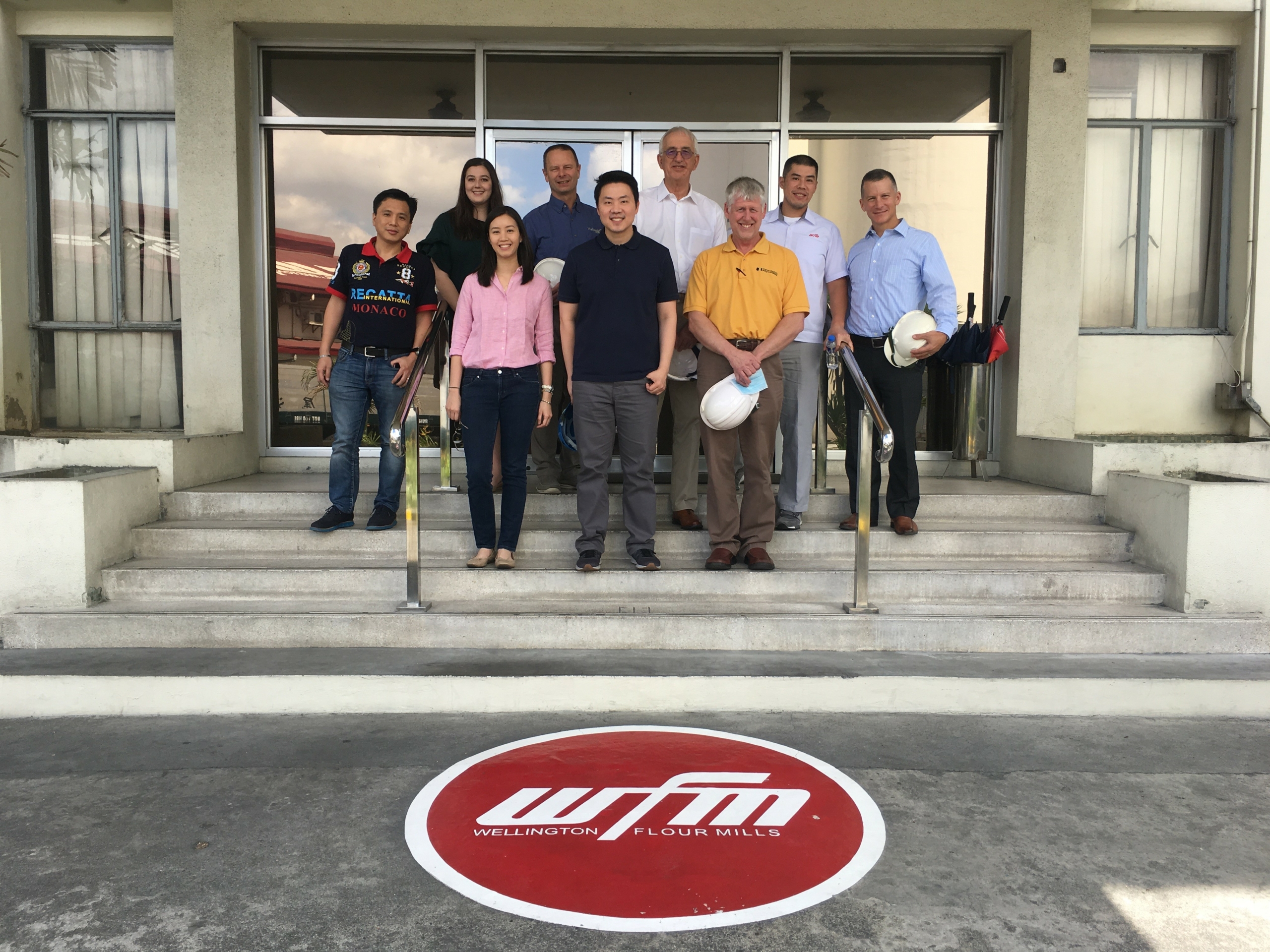
In the Philippines, the team enjoyed a meeting and tour with Wellington Flour Mills. They were joined by company President Ty Weevens (center, front row), whose grandparents originally start the family-owned mill, along with a few cousins who are also apart of the mill’s operations.
In Manila, Republic of the Philippines, the team met with traders, millers and bakers. Each meeting focused on the importance of high-quality wheat to create high quality end-products. The team visited a flour mill, as well as an industrial cracker facility. The team found a common theme that consumers here are looking for more convenience and shifting from traditionally rice-based staple foods to more wheat and grain-based meals. This is a huge market driver for a variety of cookies, crackers and bread products.
“One of our lunches with USW staff and four different mills was one of the highlights,” said Powell. “It was so beneficial to spend that time with them and share a meal.”
One of the highlights in Manila was attending the 10th International Exhibition on Bakery, Confectionery and Foodservice Equipment and Supplies, known as “Bakery Fair 2019,” hosted by the Filipino-Chinese Bakery Association Inc. While visiting different exhibits, labeling on some of the flour bags stood out to Anderson: “They said ‘Certified U.S. Wheat.’ That shows the success USW has had building a preference for our wheat, and I’m proud of that.”
In Singapore, the team members next visited a bakery training and supply company. They also had briefings from USW/Singapore regional staff member, who demonstrated how producer-funded USW activities are carried out in the region and how USW works together with local USDA Foreign Agricultural Service (FAS) staff to represent U.S. farmers.
Next, the team traveled to Jakarta, Indonesia, where they met with the largest flour mill in the world, as well as three competing milling companies. The contrast in bakeries between the Philippines and Indonesia, where small-medium end-user enterprises (SME’s) dominate 67 percent the market, was quite clear.
“This was one of the biggest surprises for me, especially since these SME’s sometimes only use one 25 kilogram bag of flour per day,” said Anderson.
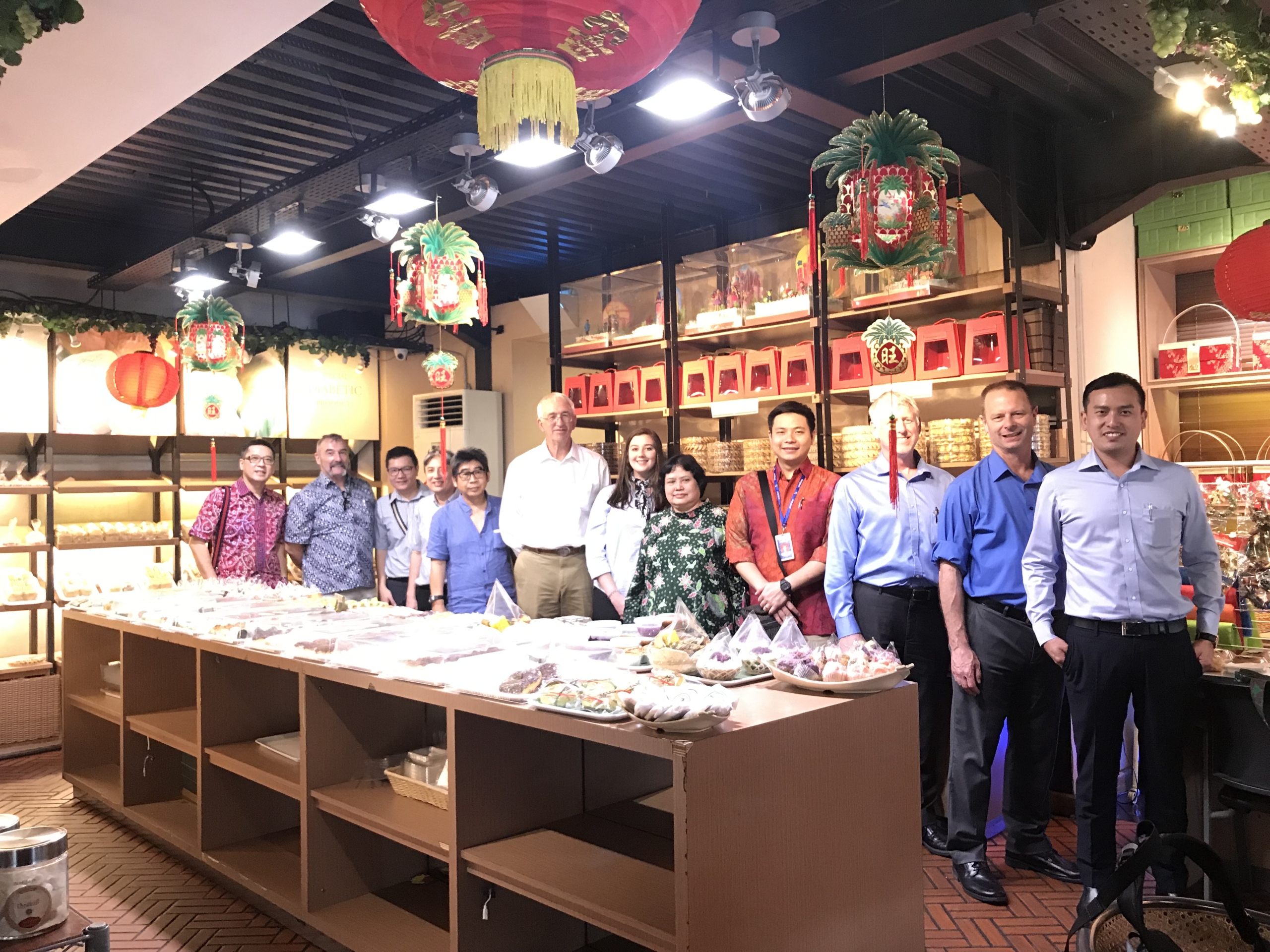
During their visit to Indonesia, the team visited Dynamic Bakery, which is a customer of Bogasari, the largest flour mill in Indonesia.
The team toured three of those bakeries in Jakarta. SME’s vary from home-based bakeries to medium scale businesses with a store front. The at-home bakeries were truly unique, and the importance of these niche producers really resonated with the group.
In such a rapidly growing wheat foods market, there are fears that “Indonesia will run out of milling capacity within the next few years if markets keep growing at the present pace,” according to one milling executive. One reason: the cost of production is a limiting factor; logistics alone make up 10 percent of variable costs.
At another flour mill, the group learned more about current market trends. In Indonesia, about 50 percent of flour in the market goes to instant noodle production. Currently, noodle production is met largely with flour from Australian white wheat. However, the team was told there is at least a window of opportunity for U.S. hard red winter wheat, especially given the recent production challenges that have significantly bumped up Australian wheat import prices.

During their visit to Indonesia, the team visited and toured Bogasari, the country’s largest flour mill, which has approximately 50% of the country’s market share. They were also joined in Indonesia by Matt Weimar, USW Regional Vice President for South Asia; and Ivan Goh, USW Biscuit/Bakery and Noodle Technologist.
“It was clear that the uncertainty of low margins and where the price of wheat will be next year was an overall concern for all markets” said Volk. “This just proves that overall U.S. wheat quality needs to be consistent from year to year.”
The team will report to the USW board of directors later this year. To see pictures from this and other Board Team trips, please visit the USW Facebook Page at https://www.facebook.com/uswheat/.
*Header Photo Caption: Visit to MY San – the market leading biscuit company in the Philippines. Mt. Makiling is in the background. (L to R) Phil Volk, North Dakota Wheat Commission; Joe Anderson, Idaho Wheat Commission; Catherine Miller, USW Programs and Planning Coordinator; Wally Powell, Oregon Wheat Commission; and Joe Sowers, USW Regional Vice President for Philippines and Korea.

